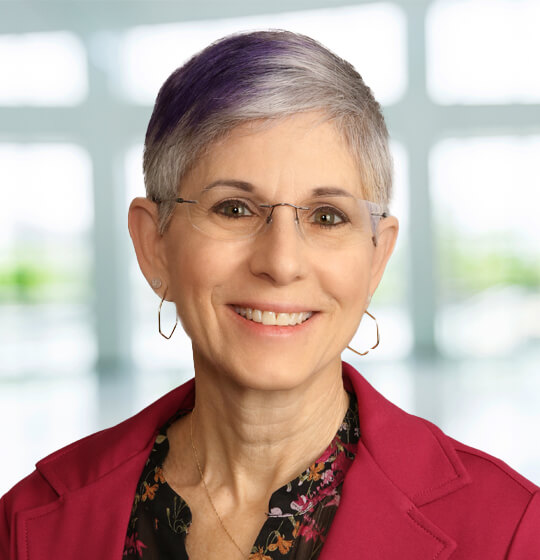On September 9, 2020, California Governor Gavin Newsom signed into law Assembly Bill (AB) 1867, which requires large employers and some health care providers to provide up to 80 hours of paid leave for COVID-19–related reasons. The new law also codifies the governor’s previously issued executive order setting forth paid sick leave and handwashing requirements for food sector workers, creates a small business family leave mediation pilot program, and addresses enforcement issues in California’s pre-COVID-19 paid sick leave law. This article focuses only on AB 1867’s COVID-19–related supplemental paid sick leave requirements for non-food sector workers.
Covered Employers
The new law seeks to fill the gap left by the federal Families First Coronavirus Response Act (FFCRA) by imposing paid sick leave requirements on “hiring entities” with 500 or more employees nationwide. The FFCRA applies only to employers with fewer than 500 employees. AB 1867 also applies to hiring entities covered by the FFRCA that excluded health care providers and emergency responders from the FFCRA’s emergency paid sick leave requirements. (As explained in our article regarding the U.S. Department of Labor’s [DOL] recently revised temporary rule implementing FFCRA public health emergency leave, the DOL’s revised definition of “health care provider” restricted the scope of employees eligible for the exclusion.)
Covered Employees
A covered employee is anyone who is employed by a covered hiring entity. The law considers a covered employee (the law uses the term “covered worker”) to be anyone who leaves his or her residence to perform work for a hiring entity.
Amount of Leave
An employee is entitled to 80 hours of supplemental paid sick leave if the employer considers the employee full time or if the employee worked at least 40 hours per week in the 2 weeks before the employee used supplemental paid sick leave.
Employees who are not full time but work a regular schedule are entitled to supplemental paid sick leave equal to the number of hours they regularly work over two weeks. Employees who work variable schedules are entitled to a total number of leave hours equal to 14 times the average number of hours worked each day in the previous 6 months. If an employee who works variable hours has worked fewer than 6 months but more than 14 days, the employee is entitled to leave in the amount of 14 times the average number of hours for the same period. Employees who have worked for the hiring entity for 14 days or fewer are entitled to supplemental paid sick leave equal to the number of hours worked. If an employee is an active firefighter, as defined by AB 1867, and is scheduled to work more than 80 hours in the 2 weeks before taking leave, the active firefighter is entitled to take leave in the number of hours the active firefighter was scheduled to work in those 2 weeks.
Reasons for Which Leave May Be Used
An employee may use leave when unable to work for any of three reasons: (1) the employee is subject to a federal, state, or local quarantine or isolation order related to COVID-19; (2) a health care provider advises the employee to self-quarantine or self-isolate due to concerns related to COVID-19; and/or (3) the hiring entity prohibits the employee from working because of health concerns related to the COVID-19’s potential transmission. Unlike the FFCRA and many California local emergency public health paid sick leave ordinances, AB 1867 does not provide leave for employees to care for others, such as children whose schools closed for COVID-19–related reasons.
The reasons for leave under AB 1867 are the same three reasons for which Executive Order N-51-20 allowed food sector workers to use COVID-19–related paid sick leave. Given the similarity between AB 1867 and the governor’s executive order, the state in its just-issued frequently asked questions about the new law interprets AB 1867 similarly to the manner in which the state interpreted N-51-20. Employers may wish to review the California Department of Industrial Relations’ answers to frequently asked questions titled “FAQs on Executive Order Supplemental Paid Sick Leave for California Workers at Companies with 500 or More Employees Nationwide and for Health Care Providers and First Responders excluded from the federal COVID-19 Related Paid Sick Leave.”
Pay Rate
Employers must pay supplemental paid sick leave at a rate equal to the highest of the following: (1) the employee’s regular rate of pay for the last pay period (including any collectively bargained pay rate), (2) the state minimum wage, or (3) the local minimum wage. The employer need not pay more than $511 a day or $5,110 in the aggregate.
Offset
Employers that previously provided COVID-19–related supplemental paid sick leave for the same reasons that AB 1867 requires, and who paid the same or greater compensation, can use those hours to offset their new supplemental paid sick leave obligations. The offset may include benefits that the employer already paid pursuant to local COVID-19–related public health emergency leave ordinances.
No Collective Bargaining Exclusion
Unlike the state’s pre-COVID-19 paid sick leave law—the California Healthy Workplace Healthy Families Act (HWHFA)—and many COVID-19–related local sick leave ordinances, AB 1867 does not include a collective bargaining exemption. Employers that negotiated separate paid sick leave arrangements with unions as the pandemic took hold will have to comply with AB 1867. Unionized employers that collectively bargained generous pre-pandemic sick leave provisions that exempted them from local COVID-19–related sick leave ordinances also will have to comply with AB 1867.
Notice to Employees
The new law requires that the California Labor Commissioner publish a model notice for employers to provide to their employees. Employers must post the notice at the workplace or provide it electronically to employees who do not frequent the workplace. The Labor Commissioner met its statutory deadline and published the notice on September 14, 2020. Employers also must maintain use records for three years.
Pay Stub Requirement
AB 1867 includes a pay stub requirement. Employers must provide written notice of the amount of supplemental paid sick leave available either on the employee’s wage statement or in a separate writing on designated pay dates.
Labor Commissioner Enforcement
Just as it enforces California’s paid sick leave law (the HWHFA, codified in the California Labor Code), so too will the California Labor Commissioner enforce AB 1867. As under the HWHFA, employers may not require that employees exhaust other available leave before using the new leave or find a replacement worker for when they take leave. AB 1867 also prohibits employers from discriminating or retaliating against employees for engaging in protected activity under AB 1867. Moreover, AB 1867, like the HWHFA, dictates a rebuttable presumption of retaliation if an employer takes an adverse employment action against an employee within 30 days of the employee’s engaging in certain protected activity under the new law.
Effective Date
The law becomes operative within 10 days of the law’s enactment.
End Date
The law is effective through December 31, 2020, or until the expiration of the FFCRA’s emergency paid sick leave requirements, whichever is later. Although the FFCRA’s paid sick leave requirements also are set to expire on December 31, 2020, AB 1867 will be extended if the federal government extends the FFCRA’s paid sick leave requirements.
Ogletree Deakins will continue to monitor and report on developments with respect to the COVID-19 pandemic and will post updates in the firm’s Coronavirus (COVID-19) Resource Center as additional information becomes available. Important information for employers is also available via the firm’s webinar programs.








